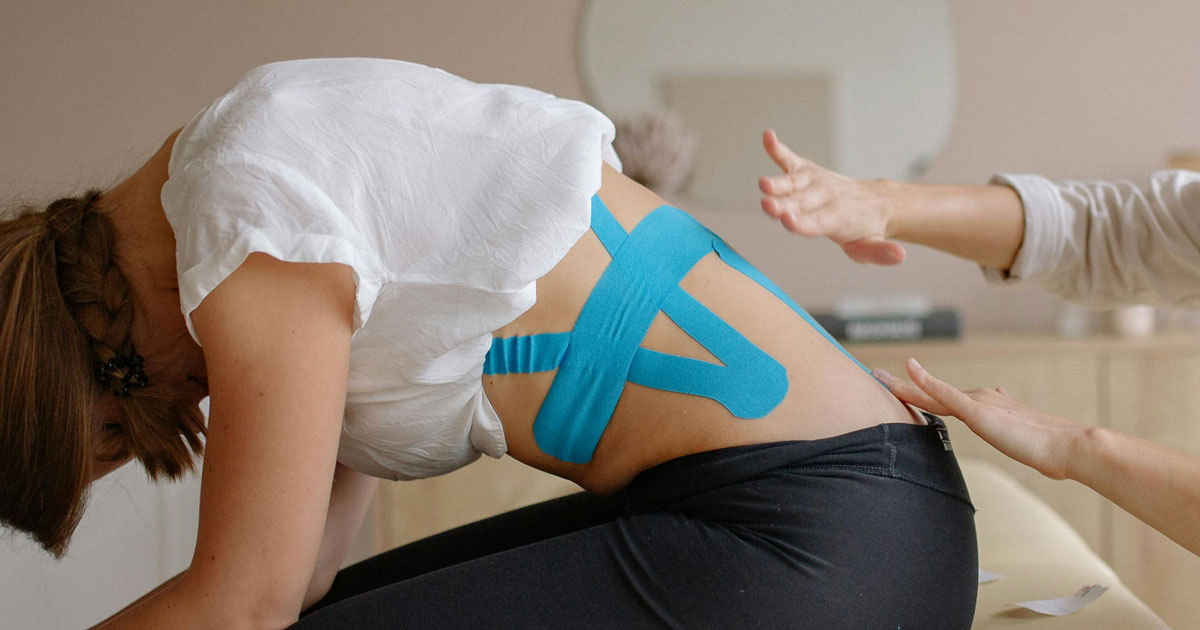
Understanding Disc Issues in Your Lower Back: A Comprehensive Guide
If you've been told you have a "slipped disc," it's natural to feel concerned. The term itself can conjure images of something drastically out of place, causing significant pain and limitations. However, it's important to clarify a common misconception: discs don't actually "slip" in the way that term suggests. They're firmly attached to your spine, acting as crucial shock absorbers and allowing for a wide range of movement. What's likely happening, and what healthcare professionals often refer to when using the term "slipped disc," is a disc bulge or a disc herniation.
This guide aims to provide you with a comprehensive understanding of disc issues in the lower back by explaining the differences between bulges and herniations, exploring the causes and symptoms, outlining treatment options, and offering practical advice for prevention and long-term management. Our goal is to empower you with the knowledge needed to make informed decisions about your health and well-being.
What Exactly Are Spinal Discs?
Before we delve into the specifics of bulges and herniations, let's take a moment to understand the anatomy of spinal discs. Picture your spine as a stack of building blocks (vertebrae), with a cushion placed between each block. These cushions represent your spinal discs.
Each disc is composed of two main parts:
- Annulus Fibrosus: This is the tough outer layer of the disc, composed of strong, fibrous tissue arranged in concentric rings, resembling the layers of an onion. The annulus fibrosus provides structural integrity to the disc and helps contain the inner layer.
- Nucleus Pulposus: This is the soft, gel-like inner core of the disc, primarily composed of water and a network of collagen fibers. The nucleus pulposus functions as a shock absorber, distributing pressure evenly across the disc while allowing flexibility and movement.
Disc Bulge vs. Disc Herniation: What's the Difference?
Now that we understand the structure of a spinal disc, let's clarify the difference between a disc bulge and a disc herniation. Both involve an outpouching of disc material, but the underlying mechanisms and severity vary.
- Disc Bulge: In a disc bulge, the annulus fibrosus (the outer layer) weakens and protrudes beyond its normal boundary. It's similar to a tire that is slightly bulging outward. The outer layer remains intact but is weakened and deformed. Disc bulges often result from age-related degeneration or repetitive stress.
- Disc Herniation: In a disc herniation, the nucleus pulposus (the inner, gel-like core) protrudes through a tear or rupture in the annulus fibrosus. This event is more significant than a bulge, as the inner material escapes the confines of the disc. The herniated material can then press on nearby nerves or the spinal cord, leading to pain and other symptoms.
Visualising the Difference:
Imagine squeezing a jelly donut. If you squeeze it gently, the jelly may bulge out slightly, but the donut itself remains intact. This is similar to a disc bulge. Now, imagine squeezing the donut much harder, causing the jelly to squirt out through a tear in the dough. This is analogous to a disc herniation.
What Causes Disc Issues?
Various factors can lead to the development of disc bulges and herniations:
- Aging: As we age, the discs lose fluid content and become less flexible. This makes them more susceptible to injury and degeneration. The annulus fibrosus may weaken and become more prone to tearing, while the nucleus pulposus can dehydrate and become less effective as a shock absorber.
- Repetitive Strain: Repeated movements, poor posture, and prolonged sitting or standing can place excessive stress on the discs. This is especially common in jobs that require heavy lifting, twisting, or bending. Over time, this repetitive strain can weaken the annulus fibrosus and result in a bulge or herniation.
- Obesity: Carrying extra weight increases the load on the spine, accelerating the degenerative process and increasing the risk of disc problems. The added pressure can compress the discs and make them more vulnerable to injury.
- Trauma: Accidents, falls, or sports injuries can cause sudden and forceful impacts on the spine, leading to disc herniations. These traumatic events can tear the annulus fibrosus and allow the nucleus pulposus to escape.
- Genetics: Some individuals may be genetically predisposed to developing disc problems. Factors such as collagen structure and disc height can be influenced by genetics.
- Smoking: Smoking reduces blood flow to the spine, which can accelerate disc degeneration. Nicotine constricts blood vessels, limiting the delivery of nutrients and oxygen to the discs.
What are the Symptoms of Disc Issues?
The symptoms of a disc bulge or herniation can vary based on the location and severity of the injury, in addition to the individual's pain tolerance. Some people may experience no symptoms at all, while others may endure debilitating pain. Common symptoms include:
- Back Pain: This is the most common symptom of a disc issue. The pain can vary from a dull ache to a sharp, stabbing sensation. It may be localised to the lower back or radiate into the buttocks, hips, or legs.
- Leg Pain (Sciatica): If the disc compresses the sciatic nerve, you may feel pain radiating down your leg, often following a specific nerve pathway. This pain is typically described as sharp, burning, or shooting.
- Numbness and Tingling: Nerve compression may also lead to numbness or tingling in the legs, feet, or toes. This sensation can be either constant or intermittent.
- Muscle Weakness: In severe cases, nerve compression can cause muscle weakness in the legs or feet, making it challenging to walk, stand, or lift objects.
- Changes in Reflexes: A healthcare professional can evaluate your reflexes to determine the degree of nerve involvement. Reduced or absent reflexes may suggest nerve compression.
- Bowel or Bladder Dysfunction: In rare instances, a large disc herniation may compress the spinal cord and impact bowel or bladder function. This serious condition demands immediate medical attention.
When Should You Worry and Seek Professional Help?
While many people have disc bulges or herniations without experiencing significant symptoms, it's important to seek professional help if you experience any of the following:
- Severe Pain: If your back or leg pain is severe and doesn't improve with rest or over-the-counter pain relievers.
- Progressive Weakness: If you experience increasing weakness in your legs or feet.
- Numbness or Tingling: If you have persistent numbness or tingling in your legs, feet, or toes.
- Bowel or Bladder Dysfunction: If you experience any changes in bowel or bladder function.
- Pain that Interferes with Daily Activities: If your pain prevents you from performing your everyday activities, such as working, sleeping, or exercising.
Diagnosis of Disc Issues:
A healthcare professional can diagnose a disc bulge or herniation through a physical examination and imaging tests.
Physical Examination: The chiro/physio will assess your range of motion, reflexes, muscle strength, and sensation. They will also ask about your symptoms and medical history.
- Imaging Tests:
- X-rays: X-rays can help rule out other causes of back pain, such as fractures or arthritis. However, they don't show soft tissues like discs.
- MRI (Magnetic Resonance Imaging): MRI is the gold standard for diagnosing disc bulges and herniations. It provides detailed images of the spinal cord, nerves, and discs.
- CT Scan (Computed Tomography): CT scans can also visualise the spine but are not as detailed as MRIs for soft tissues.
Treatment Options for Disc Issues:
The good news is that most disc issues can be managed without surgery. The primary goals of treatment are to relieve pain, reduce inflammation, and restore function. Some treatment options include:
- Avoiding activities that worsen your pain can help reduce inflammation and support tissue healing. However, prolonged bed rest is not recommended, as it can weaken muscles and lead to joint stiffness.
- Seek help from an allied health practitioner, e.g. physiotherapist / chiropractor/ exercise physiologist. Consulting a trained allied health practitioner can give you great insight into modalities that may help your pain levels and function.
Schedule your consultation on (02) 9889 3344 with one of our experienced physiotherapists, chiropractors or exercise physiologists for personalised advice about your lower back pain.
